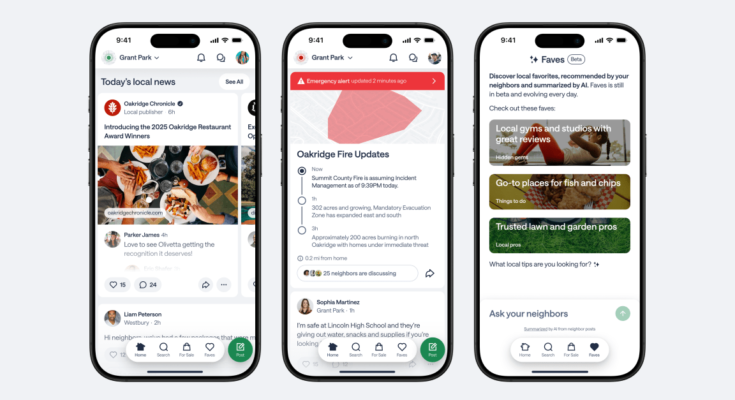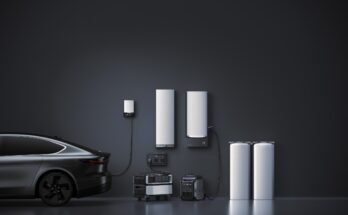At a time of Critics of restaurants based on social media,, Local influencers in the neighborhoodAnd an urgent need for relationships of confidence in the field during moments of crisis, a crowdsourcée hyperlocal platform as Nextdoor seems to be obvious. However, something did not click. Some people install Nextdoor and found a flood of updates and unrelevant notifications. Others realized that, As with other platforms based on the districtTheir community flows were transformed into groups of paranoid watches, where fear, anger and negativity were a main engine of commitment.
As the CEO and co-founder Nirav Tolia describes, there were three key problems with the platform. The first was a lack of content – something that Nextdoor had tried to repair by pulling publications from a larger geographic area to certain users of certain users spite. The second was that useful notifications for things like a construction delay, a power failure or a tornado tended to be too slow because users published on them once they had already taken place. And finally, the content was simply not enough value. “I’m sure if you use the product, you don’t use it every day as you use Instagram and how you use Tiktok,” says Tolia.
To try to run things, the company revises its offers and floods the area of content and more useful – more useful features and features.
First, the platform adds a new interactive neighborhood card called alerts, which displays emergency situations nearby: fires, bad weather, power outages, etc. Rather than being self -commissioned by the neighbors, the alert page draws information from authority such as electricity companies, police and fire services, emergency services, and Weather.comAccording to Nextdoor.
It is difficult to obtain reliable and trustworthy information to the public in emergency situations: social media prioritizes commitment to securityAnd government alert systems are sometimes uneven. During Los Angeles forest fires earlier this year, a small non -profit application called Watch Duty has become a vital resource for residents. Tolia says that user engagement was “through the roof” during Los Angeles fires, and hope is that Nextdoor can use its specific data to send better emergency alerts. If an electricity company reports that a few hundred households are affected by a breakdown, Nextdoor (which has specific personal address data from the moment when users are part) could send an alert to these people, says Tolia.
Nextdoor has never authorized (and still has not license) its content to AI companies
To help bring more high-quality content to the platform, Nextdoor is also associated with more than 3,500 local media in the United States, the United Kingdom and Canada to highlight their work in the application. A rotating new carousel will appear at the top of the destination page, and the cover of the news will be distributed in the main flow of individual messages and the alert map. The partnership, which takes place in recent months, is currently unpaid – the media simply get traffic and commitments from Nextdoor users. It is probably too early to assess whether the platform can be a major engine of engagement and traffic, but that could help the small editorial rooms to put themselves in front of the local public who care about what is happening around them. Tolia says that Nextdoor will eventually make neighborhood influencers, schools and other community groups – in other words, something that looks like a Facebook flow with geographic constraints.
Finally, Nextdoor takes more than a decade of user data and launches it in a new functionality called faves, which is a chatbot recommendations powered in AI. Tolia says that Nextdoor has never authorized (and has still not license) its content to AI societies, and its hyperlocal conversations and recommendations are not indexed by Google as, say, Reddit Threads. But the favorite chatbot in the application uses nextdoor user data and allows people to ask for things like local yoga studios or places for families to cycle, for example; The bot draws and summarizes the suggestions of previous conversations. Nextdoor users will also see another content generated by AI.
Nextdoor re -evaluates one of his fundamental ideological questions here: who counts as a neighbor? What was formerly a platform just for individuals now is to won the media, community groups and influencers, as well as the addition of tailor-made chatbots to neighborhood groups.
“We are going to go to a hyperlocal. We are going to focus on usefulness, ”explains Tolia. “We don’t want to be the place where people are moaning about what they don’t like in the neighborhood.”



